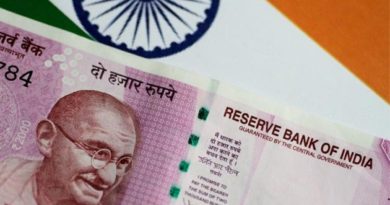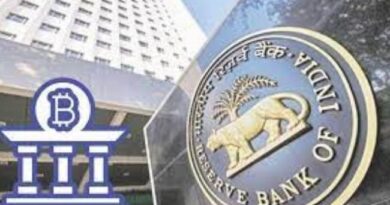Futuristic Approach of Indian Payment & Settlement System “RBI Payment Vision 2025”
Introduction: The reserve bank of India is the guiding institution for the development of the payment and settlement system in the country. Through the policy and procedure the RBI ensures a smooth payment and settlement ecosystem in the country. The primary concern of RBI for payment system is to ensure Safe, Secure, Sound, Efficient, Accessible and Authorized payment systems in the country.
In India Payment and settlement is being regulated by the Payment and Settlement act 2007. In resent past India has witnessed a drastic change in the behavior of the countrymen in relation to the payment and collection behavior. Though there was a significant presence of digital ecosystem of payment and settlement in the country but after COVID-19 the adoption of digital mode of transaction has been steeped up. The National Payment Corporation of India which was constituted in 2016 has played a vital role in designing the new payment and settlement mechanism through adoption of modern technology and easy payment interface which is being largely appreciated by all the stakeholders of payment and settlement system. Now UPI is logging more than 220 million transactions per day. The inception of UPI and QR has attracted not only the educated society of the country but also a common Indian who is living in the remote village and accepting his receipts through the QR code provided by NPCI.
The modern avatar of payment and settlement system of India is not only lauded the countrymen but also got well appreciation from the entire globe. In September 2022 the number of banks live on UPI was 358 and UPI registered 6870.80 million number of transactions amounting Rs 11,16,463.10crore. This high volume of transaction reflects the acceptability and popularity of the modern aged payment and settlement system.
Why RBI Payment vision 2025:
It is very well accepted that the new mechanism of payment and settlement system of NEFT/RTGS/UPI/IMPS etc. are very much safe secure and efficient channels for the settlement of payments. To make the Indian payment system more relevant and updated with the passage of time it is very much important to look after the scope of innovation and development in the existing payment and settlement system. Therefore there is need to foresee the futuristic model of payment and settlement system to shift the thrust of existing model from domestic to global payment and settlement model.
What is “RBI Payment Vision 2025” Document:
In order to modernize the then existing payment and settlement the RBI issued a RBI Payment Vision document 2019-21 in 2019. There was a significant outcome was noted of the vision document 2019-21. Some of the historic results are listed below.
- establishment of Reserve Bank Innovation Hub;
- framework for security of card transactions like switch on / off facility
- guidelines on limiting customer liability in case of unauthorised transactions using Prepaid Payment Instruments (PPIs)
- enabling Payments Vision 2025 | RBI 3 | Page Online Dispute Resolution (ODR) for digital payments
- Review of scope and coverage of system audit of Payment System Operators (PSOs)
- Streamlining of Quick Response (QR) code infrastructure
- Introduction of JAM trinity and UPI based payment
- Construction of RBI Digital Payments Index (DPI)
- Availability of NEFT RTGS NATCH on 24*7*365 basis.
After experiencing the very encouraging outcome of the payment vision 2019-21 the RBI has proposed RBI Payment vision 2025 with a core theme “4Es E-Payment for everyone, Everywhere, Everytime”. The Vision of RBI Payment Vision 2025 is “ Provide every user with Safe, Secure, Fast, Convenient, Accessible, and Affordable e-payment options (6 Attributes)”
The major objective of the Vision 2025 document is to provide seamless digital payment experience to its user keeping in mind of further developments in payment technology and further after collaboration with major global payment and settlement stakeholders to register a global presence of Indian Payment and Settlement system. It will also focus the current geopolitical developments across the globe and also address the risk if any arise due to such changes.
Pillers of Payment Vision 2025: The RBI Payment Vision 2025 is aiming the 5 I’s as the goalpost of the document. These are
- Intregrity
- Inclusion
- Innovation
- Institutionalization
- Internationalization
- INTEGRITY :
Now-a-days the incidents of steeling confidential data of the customers are very common. Despite having two factor authorizations model still customers are facing the fraud attempts. Considering the challenges now alternate risk based authentication mechanism will be explored that may include biometric authentication, location of payment, in-app notification, digital tokens etc.
For faster tracking of payments legal entity identifier and unique identification number of parties involved in the transaction will be explored. To facilitate efficient liquidity management for members, RBI shall explore developing a system of liquidity bridge for seamless transfer of funds from one system to another automatically without intervention of members.
To further reduce the settlement risk as also to improve efficiency by making the payments near-real time, the frequency of batches in NEFT shall be reviewed and increased.
The RBI has informed to the regulated entities to provide facility to its users to mark any transaction as fraud transaction so that the immediately information may be reach to the issuer regulated entity and after that the regulated entity can inform to the beneficiary regulated entity about such transaction. The feasibility of this Online Dispute resolution system will be examined.
The Schedule commercial banks and prepaid payment instrument issuers are using Central payment fraud information registry (CPFIR) for reporting of fraud payments. Further the access of CPFIR for the urban co-operative banks and RRB will also be explored with higher resilience and efficiency.
Since every customer of the bank is having unique account number but the sender of the money can nit cross check the name of beneficiary except of the UPI transactions. So for checking the beneficiaries name in NEFT/RTGS/IMPs transaction will also be explored after introduction of payee name lookup option in CBS.
Keeping in view of the latest development of geopolitical developments and risk associated with it the possibility shall be searched to process the payment transaction domestically with certain conditions. Presently the parties are allowed to process the transaction abroad and domestic store of payment data.
With increasing habit of the customers for digital payment it is also required to provide a security cover to defrauded customers. SO feasibility of the creation of digital payment protection fund shall be explored.
- INCLUSION :
In RBI Vision 2025 the RBI has emphasis on inclusion front. A framework of geo-tagging of payment system has been suggested. The RBI shall examine the desirability and feasibility of geo-tagging of payment transaction keeping in view of the privacy concerns of the customers.
The digital payment transaction using prepaid payment instruments (PPI) are getting popularized. A comprehensive review of the PPIs including full KYC of PPIs shall be examined
At present, RBI has issued instructions for regulating the activities of online Payment aggregators (Pas), while providing baseline technology-related recommendations to Payment Gateways (PGs). The need to bring all significant payment intermediaries, including offline PAs, under direct regulation of RBI shall be considered as per the RBI Vision 2025.
The check clearing process is an important aspect of payment and settlement. Under CTS regime 3 grids are discharging the activities of clearing. Now the One nation one grid model will be adopted to make the clearing process more cost effective.
As a part of confidence building measure among the customers a internal ombudsman scheme shall be implemented by all the Payment System operators for quick customer complaint resolution.
The money market and capital market are currently operated at fixed hours whereas the payment and settlement system of RBI is available 24*7*365. So after collaborating with the major stakeholders a possibility of increased business hours for these markets will be explored.
Through RBI’s electronic-Banking Awareness and Training (eBAAT) the RBI is activily taking initiatives for customer awareness. The streach of E-BAAT will be explored to all traditional channels at branch level and also at social media. The public awareness through RBI Says tag will also be widened and the outcomes will be measured through a periodic customer surveys.
RBI is very particular about the providing the digital payment facilities to different strata of the society including differently abled persons. To provide digital experience to the differently abled persons the RBI shall examine the feasibility of implementing suitable policy including text to voice facility like features in digital payment option.
Availing digital payment services may carry certain cost which may be borne by either the parties involved in payment and settlement. To make the costing of payment more transparent a comprehensive review of all aspect related to charges involved in various channels of digital payments shall be undertaken.
One more step towards the inclusion part the RBI shall coordinate with central government and state government to integrate their payment system with RBI’s E-Kuber.
- INNOVATION :
Innovation in payment system ia very important to be relevant and to show the global presence. On technology front internet of things devices are instrumental in the growth of digital payment. The payment service through the connected devices beyond just phone or tablets will be provided taking into account of data security, authentication identity validation etc. The Payment system operators across the world trying to implement ISO 20022 standard in context to India all step to be taken by the RBI to migrate all payment system to ISO 20022 standards.
Usage of UPI transaction is very impressive in digital payments. UPI customers can only connect bank accounts like saving and current an attempt will be made to add credit card also to the fild of UPI transaction as per the RBI Vision 2025 document. As per the plan national and international payment hackathons, competition etc. to boost innovation and exchange of ideas. Not only this but at the time of RTGS/NEFT transaction the usage of IFSC code will also be reviewed and payment mechanism will be made more secure smooth and hassle free. Buy Now and Pay Later is developing as the new mode of payment this new method of payment shall be examined and appropriate guidelines on payment involving BNPL shall be explored.
- INSTITUTIONALISATION:
The payment and settlement act was passed in 2007 considering the very dynamic payment and settlement ecosystem and fast changing customer behaviour the RBI shall shall make attempt to continuous review of PSS act and corresponding regulations. To assist the BPSS(Board for Regulation and Supervision of Payment and Settlement Systems) a PAC (Payment advisory council)will be constituted. The composition of the PAC will be reviewed periodically.
Reserve bank of India being a central bank is also member of various International standard setting bodies. Focusing on the G-20 summit in 2023 in Newdelhi RBI will constitute various committee and task forces to enhance the payment ecosystem across the globe. The RBI aiming to play a leadership role in the development of payment ecosystem will actively participate in G-20 summit 2023 in New Delhi.
- INTERNATIONALISATION:
The RBI is planning for global outreach of RTGS, NEFT, UPI and Rupey Card after collaboration of relevant stake holders like central bank , world bank etc. The feasibility of expanding RTGS to settle transaction in major trade currencies will also be explored. RBI shall examine the opportunity to maintain foreign currency account with other central banks for falilitating direct remittances in foreign currencies. This will help to increase the acceptance of INR and it will make cross-border transaction easier.
Like indo-Nepal remittance facility scheme using the NEFT system, the scope of such remittances to some more countries shall be emphasized for cross border transfers with some additional features depending upon the bilateral agreements between the central bank of other country and other feasibilities.
To search the feasibility of providing membership/technology of INFINET to other jurisdictions shall also be explored. The INFINET ( Indian financial network ) is a closed user group network that comprise RBI, member bank and financial institution. It provides financial messaging services through its member interface application to all RTGS Participants.
For the safety measures all cross border transaction with the cards issued in India Additional factor authentication shall be implemented for giving confidence to the users of digital payments. In India Clearing corporation of India playing the role of aggregator which participate in CLS as third party member. RBI shall initiate a dialogue to include INR as a currency of trading through CLS Bank for increasing the acceptance of INR in Global market.
The reserve bank of India is also planning to introduce the digital currency in the Indian markets. Cases of the digital currency will be studied and a mechanism will be developed so that the CBDC will be used as cross border payment and settlements
Expected outcome of “RBI Payment Vision 2025”
Various initiatives proposed under the above five goalposts shall have the following ten expected outcomes during the Vision period:
- Volume of cheque-based payments to be less than 0.25% of the total retail payments
- More than 3x increase in number of digital payment transactions
- UPI to register average annualised growth of 50% and IMPS / NEFT at 20%
- Increase of payment transaction turnover vis-à-vis GDP to 8
- Increase in debit card transactions at PoS by 20%
- Debit card usage to surpass credit cards in terms of value
- Increase in PPI transactions by 150%
- Card acceptance infrastructure to increase to 250 lakh
- Increase of registered customer base for mobile based transactions by 50% CAGR
- Reduction in Cash in Circulation (CIC) as a percentage of GDP.
Conclusion:
After studying the above five goalpost of RBI’s Vision 2025 documents we can easily conclude that the Vision document is a futuristic roadmap of Indian payment and settlement system with the aim to provide safety security and hassle free payment settlement in India. It is also a process of a continuous improvement of Indian payment system to make it a globally accepted payment system in Indian currencies and also in foreign major traded currencies. It is having a vision to take Indian payment system at global outreach with its proved record of efficiency, accuracy and integrity. The thought process imbibed in the Vision document after proper implementation and monitoring will take the customer in the new era of payment and settlement experience.




